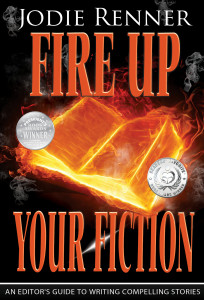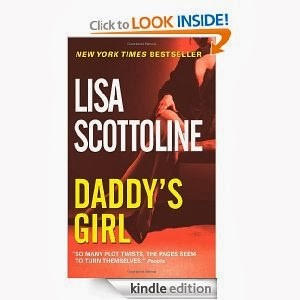 by Jodie Renner, editor & author
by Jodie Renner, editor & author
In my editing and blog posts, I often suggest techniques for bringing characters and the scene to life on the page. A big one I advise over and over is to show the protagonist’s immediate emotional, physical, and/or thought reactions to anything significant that has just happened. This glimpse into the POV character’s real feelings and thoughts increases readers’ emotional engagement, which keeps them eagerly reading. (See Show Your Characters’ Reactions to Bring Them Alive)
Showing your character’s immediate thought-reactions frequently is a great way to let the readers in on what your character is really thinking about what’s going on, how they’re reacting inside, often in contrast to what they’re saying or how they’re acting outwardly. And it helps reveal their personality.
Here are some examples of brief, immediate thought-reactions:
 |
| A scene in Breaking Bad |
No!
Damn.
What?
In your dreams.
What the hell?
Give me a break!
These direct thoughts, the equivalent of direct speech in quotation marks, are silent, inner words the character can’t or doesn’t want to reveal. It’s most effective to italicize these quick, brief thought-reactions, both for emphasis and to show that it’s a direct thought, like the character talking to herself, not the slightly removed indirect thought.
Here are a few examples of indirect thoughts vs. the closer-in, higher-impact direct thoughts:
 Indirect: She’d had enough. She really wanted to leave.
Indirect: She’d had enough. She really wanted to leave.
Direct speech: “I’ve had enough. I’m heading out.”
Direct thought: This sucks! I’m outta here.
(Or whatever. More personal, more unique voice, more attitude, less social veneer.)
Use present tense for direct thoughts.
If your story is in past tense, as most novels are, narration, indirect speech and thoughts will be in past tense, too. But it’s important to put direct, quoted speech and direct, italicized thoughts in present tense, and first-person (or sometimes second person), as they are the exact words the character is thinking.
Direct thoughts = internal dialogue.
Note: Never use quotation marks for thoughts. Quotation marks are for words spoken out loud.
A few more examples:
Indirect thought: He wondered where she was.
Direct speech (dialogue): “Where is she?” he asked.
Direct thought: Where is she? Or: Where the hell is she, anyway?
Note how the italics take the place of quotation marks when it’s a direct thought, the character talking to himself. Also, the italics indicate direct thoughts, so no need to add “he thought” or “she thought.”
Indirect speech: She asked us what was going on.
Indirect thought: She wondered what was going on.
Direct speech: “What’s going on here?” she asked.
Direct thought-reaction: What on earth is going on?
(Or whatever, according to the voice of the POV character.)
To me, using these direct thought-reactions brings the character more to life by showing their innermost, uncensored thoughts and impulses.
In these cases, italics for thoughts take the place of the quotation marks that would be used if the words were spoken out loud. But I advise against putting several long thoughts in a row into italics. In fact, do we even think in complete sentences arranged in logical order to create paragraphs? I don’t think so. Thoughts are often disjointed fragments, as is casual dialogue.
Since italics are also used for emphasis, be sure not to overdo them, or they’ll lose their power.
But do use italics for those immediate thought-reactions, the equivalent of saying out loud, “What!” or “No way!” or “You wish.” Or “I don’t think so.” Or “Yeah, right.” Or “Great.” Or “Perfect.” Or “Oh my god.” Only, for thoughts, take off the quotation marks, of course, so you’ll write: What! or No way, etc.
To me, italics used in this way indicate a fast, sudden break in the social veneer, a revelation or peek into the psyche of the thinker.
So try to insert direct thought-reactions where appropriate to effectively show your character’s immediate internal reactions to events.
But don’t italicize indirect thoughts.
To me, italicizing indirect thoughts (in third-person, past tense) would be the same as putting quotation marks around indirect speech, like: He said, “He wished he could come, too.” (Should be: He said, “I wish I could come, too.”)
So don’t italicize phrases like: Why were they looking for her? She had to find a place to hide!
(“her” and “she” refer to the person thinking.) Keep it in normal font, or change it to a direct thought and italicize:
Why are they looking for me? Where can I hide?
EXAMPLES FROM BESTSELLERS:
Some bestselling authors use a lot of italicized thought-reactions, while others just use them sparingly or not at all. It seems to be a growing trend, though, and I think it’s a great technique for highlighting the character’s inner emotional reactions effectively, directly, and in the fewest possible words.
Lisa Scottoline, for example, uses italicized brief thought-reactions a lot in her novels. They provide a quick peek into the character’s immediate thoughts, without a lot of explaining. Like in Daddy’s Girl:
The heroine, Natalie, has a small cut on her face, and her father, on the phone, asks which hospital
she went to. She says she didn’t need to, “It’s just a little cut.”
“On your face, no cut is too little. You don’t want a scar. You’re not one of the boys.”
Oh please. “Dad, it won’t scar.”
Later, a good-looking guy, Angus, makes a suggestion about lunch while they’re working.
Did he just ask me out?
Later, as they’re working together, Angus tries to protect her, but she isn’t having any of it. The thought-reaction shows the contrast between how she’s really feeling and how she wants him to think she’s going along with his plans.
“I’ll get you out of here in the morning, and you’ll be safe.”
 No way. “Okay, you’ve convinced me.”
No way. “Okay, you’ve convinced me.”
Andrew Gross uses frequent thought-reactions in italics very effectively in his riveting thriller, Don’t Look Twice. Here’s one brief example:
A chill ran down her spine. … Don’t let him see you. Get the hell out of here, the tremor said.
And Dean Koontz uses this technique from time to time in his novel Intensity. For example:
Chyna is hesitating about opening a door, then decides to throw caution to the wind:
 Screw it.
Screw it.
She put her hand on the knob, turned it cautiously, and…
Then later:
He was coming forward, leisurely covering the same territory over which Chyna had just scuttled.
What the hell is he doing?
She wanted to take the photograph but didn’t dare. She put it on the floor where she’d found it.
Note that these intensified thoughts are often at the beginning of a paragraph or set off in their own line, for emphasis. Or sometimes they’re at the end of a paragraph, to leave us with something to think about, as in later in the same book.
Lee Child’s The Affair has lots of examples of Jack Reacher’s critical thoughts in italics. Here’s one of many I could have chosen:
 He asked “Was I on your list of things that might crawl out from under a rock?”
He asked “Was I on your list of things that might crawl out from under a rock?”
You were the list, I thought.
He said, “Was I?”
“No,” I lied.
(Not to nit-pick with a huge bestselling author, but in my opinion, neither the “I thought” or the “I lied” are necessary above.)
Lee Child also uses this technique a lot in The Hard Way, especially to show Jack Reacher’s mind busily working away while he’s talking to or watching someone, or to emphasize the importance of a bit of info he’s just learned.
 David Baldacci uses this technique frequently in Hell’s Corner to show the direct thoughts of his
David Baldacci uses this technique frequently in Hell’s Corner to show the direct thoughts of his
protagonist, Oliver Stone. Here’s one example:
Burn in hell, Carter, thought Stone as the door closed behind him.
And I’ll see you when I get there.
Brenda Novak, in her romantic suspense, In Close, uses italicized thoughts to show the contrast between what the character, Claire, is saying and what she’s really thinking:
“Maybe I could get back to you in the morning after I’ve…I’ve had some sleep.” And a chance to prepare myself for what you might say….
 Even TKZ’s James Scott Bell uses this technique in his delightful novellette, Force of Habit. The spunky, rebellious Sister J, a former actress and trained martial arts expert, is being confronted by someone obnoxious who has recognized her. Her internal dialogue shows her (unsuccessful) attempt at calming herself.
Even TKZ’s James Scott Bell uses this technique in his delightful novellette, Force of Habit. The spunky, rebellious Sister J, a former actress and trained martial arts expert, is being confronted by someone obnoxious who has recognized her. Her internal dialogue shows her (unsuccessful) attempt at calming herself.
“Can you still kick butt?”
She could all right, and she felt like kicking something right now. His shin, if not the wall. Think of St. Francis, she told herself. Think of birds and flowers…
 Jodie Renner is a freelance fiction editor and the award-winning author of three craft-of-writing guides in her series An Editor’s Guide to Writing Compelling Fiction: Captivate Your Readers, Fire up Your Fiction, and Writing a Killer Thriller. She has also published two clickable time-saving e-resources to date: Quick Clicks: Spelling List and Quick Clicks: Word Usage. You can find Jodie at www.JodieRenner.com, www.JodieRennerEditing.com, her blog, http://jodierennerediting.blogspot.com/, and on Facebook, Twitter, and Google+.
Jodie Renner is a freelance fiction editor and the award-winning author of three craft-of-writing guides in her series An Editor’s Guide to Writing Compelling Fiction: Captivate Your Readers, Fire up Your Fiction, and Writing a Killer Thriller. She has also published two clickable time-saving e-resources to date: Quick Clicks: Spelling List and Quick Clicks: Word Usage. You can find Jodie at www.JodieRenner.com, www.JodieRennerEditing.com, her blog, http://jodierennerediting.blogspot.com/, and on Facebook, Twitter, and Google+.


In third person, I use these techniques all the time. At the very least, it helps me keep in POV, a weakness of mine (I tend toward the omniscient at times). In first person, I break the rules–the italics have their more traditional use, i.e. emphasis. In reviewing, I often catch authors who forget the present tense rule when doing thoughts in third person POV. I wonder if there’s a convention for first person. Probably not, the way I use it.
Your examples are very entertaining, by the way. Good post….
Thanks for your comments, Steven. Yes, these are all examples from third-person novels. But I noticed in Hunger Games, Katniss’s inner thoughts are sometimes italicized, especially the critical ones.
You have a knack, Jodie, for laying technical things out with great clarity. The mark of a good teacher, I’d say. This is a good instructive post…too many folks don’t seem to grasp the subtle differences you note. ie: when to use italics or “he thought” for instance. I’m with you — I like the non-attributed italics route and use it in my own books. But I also think this technique is like curry — something to be used sparingly. I am finding, on rewrites of my WIP, that I’m using ital thoughts TOO much..it is becoming my crutch or new tic. So I am going back and finding different ways of conveying internal conflict for my characters. Not easy!
Thanks, Kris – my background of many years as a teacher probably helps!
I agree that it’s best not to overdo italics anywhere in the novel, but for these immediate strong reactions, I think it’s perfect! And if it’s short, I don’t see it as distracting. I see it as an indication that the character is revealing more of their inner, real feelings and reactions – going deeper.
I love to use thought reactions, especially when they conflict with what my character actually says. One thing I don’t like in thought reactions which are italicized is the tags (if that’s what you’d still call them).
From the example:
She could all right, and she felt like kicking something right now. His shin, if not the wall. Think of St. Francis, she told herself. Think of birds and flowers…
I would use:
She could all right, and she felt like kicking something right now. His shin, if not the wall. Think of St. Francis. Think of birds and flowers…
To me, the “she told herself” seems a bit redundant and unnecessary.
I’m not sure I agree. The insertion of the ‘she told herself’ creates a natural pause, a hesitation that does well to slow the thought down and show that there is an actual battle inside the woman.
Pay your money, take your chances, and your mileage may (and probably will) vary.
I see what you mean, Paul. The “she told herself” is like “she tried to convince herself”– it shows her effort at self-talk to calm herself down.
As the author of said excerpt, Paul and Jodie are both correct. I used it for a beat, a slight pause, and also to emphasize that she’s trying to convince herself. Inner conflict, etc.
Sometimes it’s about the “feel” of the moment, what you want it to sound like.
But I understand your craft eye, Diane, which is sharp. There may very well be times when it is completely gratuitous and should be cut.
Writers have to be able to step back and think what the effect on the reader will be. I instinctively know when I want to slow things down a beat, or speed things up, but that’s after a lot of years trying to figure this stuff out….which, BTW, never stops.
James, I wish some of my clients had your attitude about constantly learning the craft! Many of them, the ones who will and do succeed, are open to new ideas and realize they/we all have a lot to learn, and are willing to roll up their sleeves and get to work!
The ones who feel it’s “good enough” as it is, because they don’t want to take the time or effort to think about how a few changes could make their stories more compelling are lacking the essential “can-do” attitude and determination of authors whose books delight and sell.
I saw that a few examples used “tags” and wondered about that too, so thank you for beating me to the question.
I also think it’s effectiveness depends on the situation. I read all of the examples out loud, and I agree that “I thought/I lied” in the Lee Child example sounded redundant, while James Scott Bell and David Baldacci used the tag to give the next line some punch. In Baldacci’s example, it gave that last line extra gravity, and in Bell’s example, it made her inner thoughts funnier.
These are just my opinions, of course, and this is probably where each author’s style really comes into play.
Great observations, Elizabeth!
This exchange was worth the price of admission all by itself! 🙂
Chris
Good point, Diane. I agree.
I like the post, Jodie. It made me think. . .
I make use of direct thoughts, usually to build intimacy between the reader and the character and to reinforce emotions that are playing out. If the scene is more cerebral, I usually use indirect thoughts.
Not that I realized this when I wrote. I just went back and looked at my writing and saw when and why I had done things.
The part that I find tricky is making sure-really sure-that the thoughts are those of the character and not injected because I have something to say.
I love your last paragraph, Paul! That goes for anything that goes into the novel, really, I think. My advice for my author clients is to stay in the point of view of the character and don’t intrude as the author to tell the readers things. Make everything organic to the characters and where they’re at in the story world!
Absolutely to that, Jodie and Paul! I don’t think anything pops the ole “suspension” balloon quite like “author intrusion.”
I’ve always got this little demon-voice whispering cute remarks and wisecracks in my ear. Best to ignore him.
True, Jim. “Author intrusion” = “telling” or even “talking at” – which nobody likes.
Great examples! Here’s an alternative way to do the Lee Child example:
He asked “Was I on your list of things that might crawl out from under a rock?”
I remained silent, and he spoke again. “Was I?”
“No.”
You were the list.
I like this kind of technique because it implies an inner thought through the action of silence, and avoids the use of “I thought”, or worse, “I lied”.
I like your version of that short passage, Kathryn! Packs more punch, and allows the readers to feel they’re in on a little secret.
I love using direct thoughts to get those immediate responses. It helps moves things along as well as provides insight into the characters. It kind of comes under the show don’t tell rule too:) Thanks for providing some great examples.
Exactly, on all counts! Thanks, Clare, for your opinions on this little technique. 🙂
Damn. That Jodie just hit a freakin’ home run again. Them lady’s on fire!
As opposed to…
“Exceptional post, Jodie! Bravo, indeed,” said A.M.
LOL! Thanks, A.M., for your creative and amusing comment! 🙂
This comment has been removed by the author.
These quick thought reactions are great ways to show your character’s voice. Is she snippy, funny, tart, or sarcastic? Her inner thoughts will reveal personality to the reader.
Absolutely, Nancy! 🙂
Great and useful stuff Jodie, as always.
I like conveying internal dialogue using both italics and the Mufferaw font with traditional Japanese punctuation. And I often use a form of pig-Latin with my characters. I say form of pig-Latin because, since I do not eat pork it is necessary to do it as turkey-bacon-Latin as in.
Ellwobble,Asilbobble ertainlycobble isobble offobble ishobble utnobble odaytobble。 Eedsnobble anobble edmobble adjustmentobble。
And so on.
Sorry, the system won’t allow the Mufferaw font, you’ll have to look that one up yourself.
I love the use of deep POV (inner thoughts) especially when it adds subtext to contrary body language and dialogue. The layers to a scene are so much fun to write. Nice post, Jodie.
Thanks, Jordan! And I like the way you express the advantages to using this technique! I’m all for deep POV throughout the novel, as my clients know!
Great post. I think it also provides a good example of what can be achieved in the editing process – try changing phrases or passages from indirect to direct thought, etc. to see what the effect is.
Good point, Anon!
Jodie–
Like others in TKZ, you are an excellent help to writers. The examples here make the post a real “teaching moment.” I am with you about one of your quibbles related to the Lee Child quote: the “I lied” is not necessary, and by including it, the writer takes away the small satisfaction the reader gets from hearing the lie for himself.
So true, Barry! Readers like to be actively involved in the process, not “told” stuff.
And thanks!
Thanks for the wonderful post. I’ve written a few books in first person, but third person is where I really have to work at sinking into that deep POV. Thanks for these tips, I’ll be implementing them right away!
You’re welcome, Elizabeth! Glad you find my tips helpful!
Such a great post. I have to agree with everything you said, Jodie.
Speaking of italics, I have a question. My editor and I have differing views on how you’d format a brief premonition. It’s only 3 short paragraphs (only to highlight the important info), but to italicize that much, I think, would be far too much to a reader. How would you suggest handling that?
Thanks, Ariana. As for italicizing the brief premonition, I would definitely do that! It’s like going into another realm, so needs the italics to set it off. Good luck with that!
Great, thank you so much. I will go with that. I appreciate it. 🙂
Thank you for such an informative post, Jodie! That explains a lot. Whenever I’ve seen this, I wondered if it was the right thing to do, as it seemed like a point-or-view change. I understand the difference now. I am a “newbie” and follow this blog daily. I just downloaded your book, Style that Sizzles..I look forward to reading it. I also have 2 of JSB’s books, Plot & Structure and Conflict and Suspense. I am working on my first novel and reading up on the craft. I don’t expect it to be perfect, of course, but want to do my best and avoid amateur mistakes. Thanks again to all of you!
Glad you found my tips helpful, Rebecca, and I hope you enjoy my Style That Sizzles book! Yes, those two books of James Scott Bell’s are both excellent! I also highly recommend his Revision & Self-Editing! Good luck with your debut novel!
This comment has been removed by a blog administrator.
So glad to have found this site. I often obsess
about the technical aspects of writing craft. And here are a bunch of writers addressing these very issues with clarity.
I agree with what Jodie’s written except for one detail: while italics may be accepted practice for inner dialog, I leave those passages unitalicized because a.) I’ve put a lot of my POV character’s dialog on the page, and that many italics look ugly to me. b.) I’m mostly working in tight third-person POV, as apposed to omniscient, so there’s hopefully little confusion between my character and the Voice of God.
Thanks for this, and I look forward to lots more!
Thank you a hundred times for clarifying the use of italics for me, Jodie. I’ve always been fuzzy on exactly when, where, and how to use italics, but I think I’ll print off this post and stick it in with my editing checklist.
You’ve been a terrific addition to TKZ. Looking forward to many more insightful posts from you.
Chris